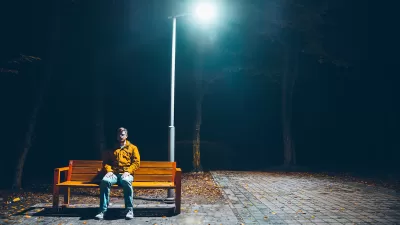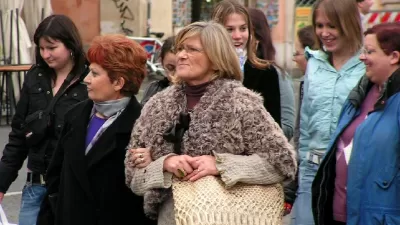Deborah Marton, Executive Director of the Design Trust for Public Space, asks, "Obviously public space should be beautiful and well designed for circulation, but what else should it do?"
A discussion arises about how design dictates behavior (and should it), the role of beauty, and the idea that public spaces would be better loved if there weren't so many crappy ones around.
Susan Grant Lewin writes, "I feel that public spaces, in cities at least, have to be just rare enough to make them exciting. I live in New York and there are so many "pseudo" public spaces–these little semi-private plazas–and so many of them are mediocre at best. They were created by well-intentioned people, obviously, and by well-intentioned policies; but having too many small, middling-quality public spaces takes away not only the resources to maintain and improve each individual space, but also takes away some of the special-ness of coming upon a truly high-quality public space in the city."
FULL STORY: How can public spaces be designed

Planetizen Federal Action Tracker
A weekly monitor of how Trump’s orders and actions are impacting planners and planning in America.

Maui's Vacation Rental Debate Turns Ugly
Verbal attacks, misinformation campaigns and fistfights plague a high-stakes debate to convert thousands of vacation rentals into long-term housing.

Restaurant Patios Were a Pandemic Win — Why Were They so Hard to Keep?
Social distancing requirements and changes in travel patterns prompted cities to pilot new uses for street and sidewalk space. Then it got complicated.

In California Battle of Housing vs. Environment, Housing Just Won
A new state law significantly limits the power of CEQA, an environmental review law that served as a powerful tool for blocking new development.

Boulder Eliminates Parking Minimums Citywide
Officials estimate the cost of building a single underground parking space at up to $100,000.

Orange County, Florida Adopts Largest US “Sprawl Repair” Code
The ‘Orange Code’ seeks to rectify decades of sprawl-inducing, car-oriented development.
Urban Design for Planners 1: Software Tools
This six-course series explores essential urban design concepts using open source software and equips planners with the tools they need to participate fully in the urban design process.
Planning for Universal Design
Learn the tools for implementing Universal Design in planning regulations.
Heyer Gruel & Associates PA
JM Goldson LLC
Custer County Colorado
City of Camden Redevelopment Agency
City of Astoria
Transportation Research & Education Center (TREC) at Portland State University
Jefferson Parish Government
Camden Redevelopment Agency
City of Claremont





























